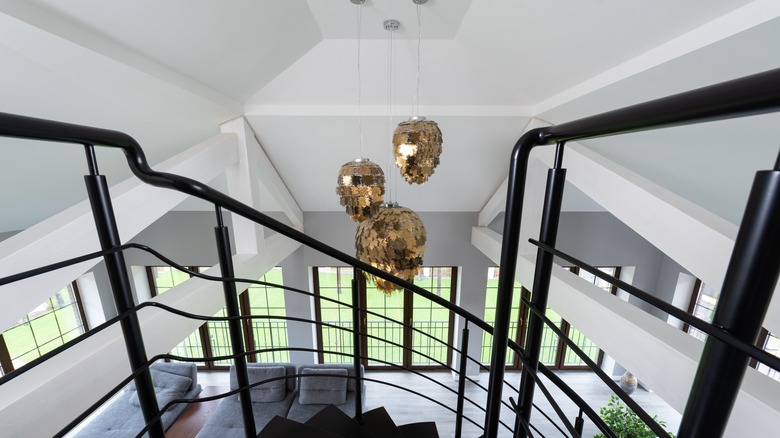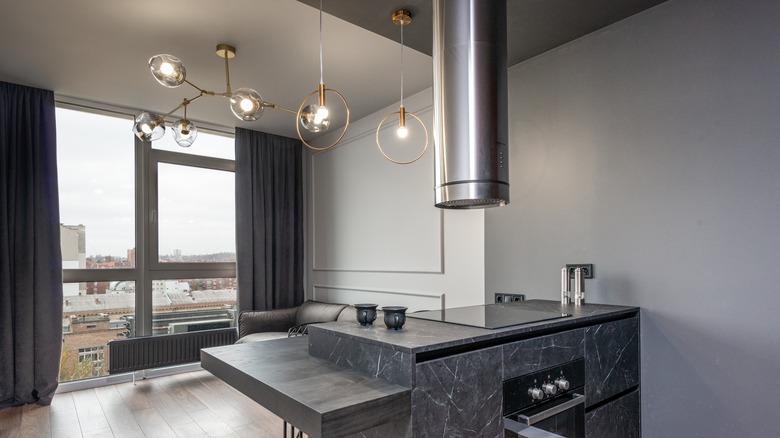How Nate Berkus Really Feels About Mixing Metal Finishes In One Space
Do you ever feel like there are too many rules and suggestions to follow when it comes to home design? It can become overwhelming, trying to remember what goes together and what should never occupy the same space... but the truth is your dwelling can be themed and designed any way you want, and numerous interior decorators and experts believe that mixing elements is one of the surest ways to create an authentic vibe. Nate Berkus just so happens to be one of these pros, and the urban myth that metals can't be mixed isn't even slightly true. According to Berkus, "You CAN mix metals..." and you should!
Combining different metals can transform your home into an elemental melting pot, which allows you to play around with different colors, as well as other textures and design themes. Instead of limiting your rooms to one set type, you should experiment with brass, silver, gold, and iron and find the ideal combinations that elevate your space to its full potential. It's always a good idea to place your metals next to each other and get a lay of the land before committing, but the sky is the limit when it comes to creating your dream home, especially when it comes to your hardware.
Mix your metals with purpose
Consider this: the last time you visited a friend's home, did you go around inspecting their metals and weighing whether they worked together or not? Most people hardly notice each individual material within someone's abode, taking in the overall ambiance over specific details. While wall hangings or a particular rug might draw attention, your metals are there to build on existing color schemes. According to Nate Berkus, many designs within the dwellings of the rich and famous feature coexisting materials that fill the rooms without limitations.
In an article for the Washington Post, Berkus explained that "patination and texture is so much more important to me." Rather than dwell on combining iron and gold within a room, think about the finish of each and if their glossy or matte surfaces will enhance the rest of the décor. In order for a space to provide depth and intrigue, it should have different finishes, as these produce dimension in a subtle way. For your kitchen, you could combine brass and gold with copper to complement darker tones, changing up cabinet handles, drawer hardware, and sink fixtures all in one area. If you have a room that features lighter shades, silver is a classic metal that looks good with iron for a cohesive yet arresting finish. Another pro tip from Kathy Kuo Home encourages the use of iron as a staple for any area, as it plays the role of a neutral material and color that matches everything around it.
Tips for combining different metals
When creating an interior design, Nate Berkus mentions in the Washington Post article that he hardly notices what metals fill a space while it's undergoing work. This is a great tip for anyone who is remodeling or decorating a new home because by focusing too intently on the fixtures or hardware, you might start to overthink and make everything too matchy-matchy. However, with that being said, you still want to try and pull the metals you use through the room or space, using the material more than once so it doesn't seem out of place or randomly thrown in. If you have a table or chairs that feature stainless steel, opt for a smaller side table or stool made of the same metal.
Keep in mind that warmer metals, which include copper, gold, and brass, can work with your cooler tones. If you have a space that is already dedicated to chrome or stainless steel, a few pieces of gold or brass might even add texture, according to Berkus' Instagram. Throw the rulebook out the window, and get ready to play around with your options to create your masterpiece — and don't be afraid to try several times before settling on the finished product!


